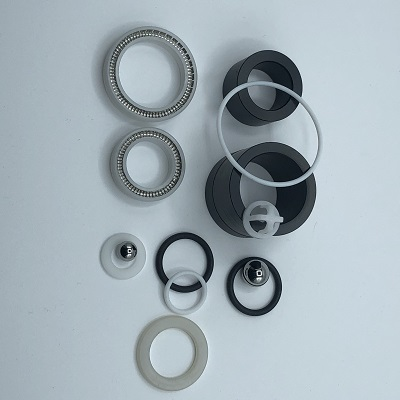Hydraulic systems have for instance been used as the mainstay for several sectors including construction, agriculture, automotive, and manufacturing, among others. At the center of these systems are hydra pump kits needed to turn mechanical energy into hydraulic energy that is used in running various equipment. For instance, technological developments and changes in industry requirements have encouraged enhancements in the design of these kits as far as reliability, cost, and other environmental impacts are concerned. In this article, we will look at new developments and trends in hydra pump kits that are worthy of future hydraulic systems.
1. Smart Hydra Pump Kits:
IoT and Automation are two technologies that are quite popular all over the world; organizations should embrace them.
Probably the biggest trend happening within the hydraulic pump space is the IoT and automation implementation. Smart hydra pump kits have the advantages of monitoring as well as controlling the functionality of the system and do not enhance downtimes. Some of these pumps can be equipped with sensors that can detect pressure or temperature and fluid levels and relay them back to a central control system. This allows for the use of measures that help to identify possible faults so that they can be corrected before they fail equipment.
Specifically, industries with expensive downtime costs, common in mining and manufacturing industries, have an answer in smart pump kits that address and enhance general productivity.
2. Energy-Efficient Designs: Energy Saving
Energy conservation seems to be a center of attention, and rightly so, for both, new and advanced hydraulic systems. The more conventional hydraulic pumps can be rather power-consuming; many of them are designed to work all the time, even when only full force is required. Consequently, the manufacturers adopted energy-efficient hydra pump kits with VSDs and load-sensing technology.
Variable speed drives control the amount of power that it gives to the pump thus allowing it to slow it down where there is a small demand, but where there is demand it can increase the amount of work that is required to be done. These are complemented by the load-sensing technology that enables it to determine the amount of pressure that is required and then apply it accordingly.
3. Compact and Lightweight Pump Kits
Due to factors such as portability a mobile application, printable and lightweight hydra pump kit models are preferred in the market. Some of the uses of hydraulic systems include agriculture, construction, and emergency services, which may necessitate transportable hydraulics that can be transported and put up in a short time. Hence, there has been a development of smaller, lighter, and easy-to-manage pump kits with optimum performance by the manufacturers.
These compact systems are used where the space is limited or for equipment that has to be relocated often. As much as these vehicles are comparatively smaller than the larger cars, technological developments in the materials and techniques in engineering have seen these kits being very efficient and durable. This trend is set to continue as it’s an attractive option for industries out for a more portable power similar to that offered by the full-sized inverters.
4. Eco-Friendly Hydraulic Fluids:
Educating consumers to think about the impacts of their consumption in terms of social, environmental, and economic sustainability is the typical role of a sustainable marketer, as are the following:
Growing sensitization to the environment has seen industries looking for means to minimize their impact on the environment. Here, innovation is visible in the choice of the hydra pump kits like the eco-friendly hydraulic fluids. Many earlier titan packing kits employ petroleum-based fluid and such a fluid if released or expelled can hurt the environment. As a result of this manufacturers have come up with biodegradable and non-toxic hydraulic fluids which have less harm to the environment and to people.
These newly developed, environment-friendly fluids provide performance that is at par with the conventional fluids but are less hazardous to the environment. They are especially useful for companies, that are working in such areas as agriculture, forestry, and construction, and use hydraulic systems being in contact with soil and water. The change in the direction toward environmentally friendly hydraulic fluids will probably persist with the tightening of environmental protection standards of industries and governments across the world.
Conclusion
The hydra pump kit industry is in a state of rapid technological advancement primarily due to concerns about efficiency, environmental impacts, as well as adaptability. Smart hydraulic pumps, energy management, environmental-friendly fluids, modular systems such as nanofluid coolers, and renewable power supplies are all trends that are defining the future hydraulic systems of today’s varied industries. It’s therefore clear that as technology progresses in the future, organizations that can cope with these future technologies will in effect have greater identity and adapt to the challenges that come with this change. It is therefore inevitable that as hydraulic pump technology continues to evolve, there will be even more enthralling and innovative improvements in the future through smart systems or the application of the digital twins.


